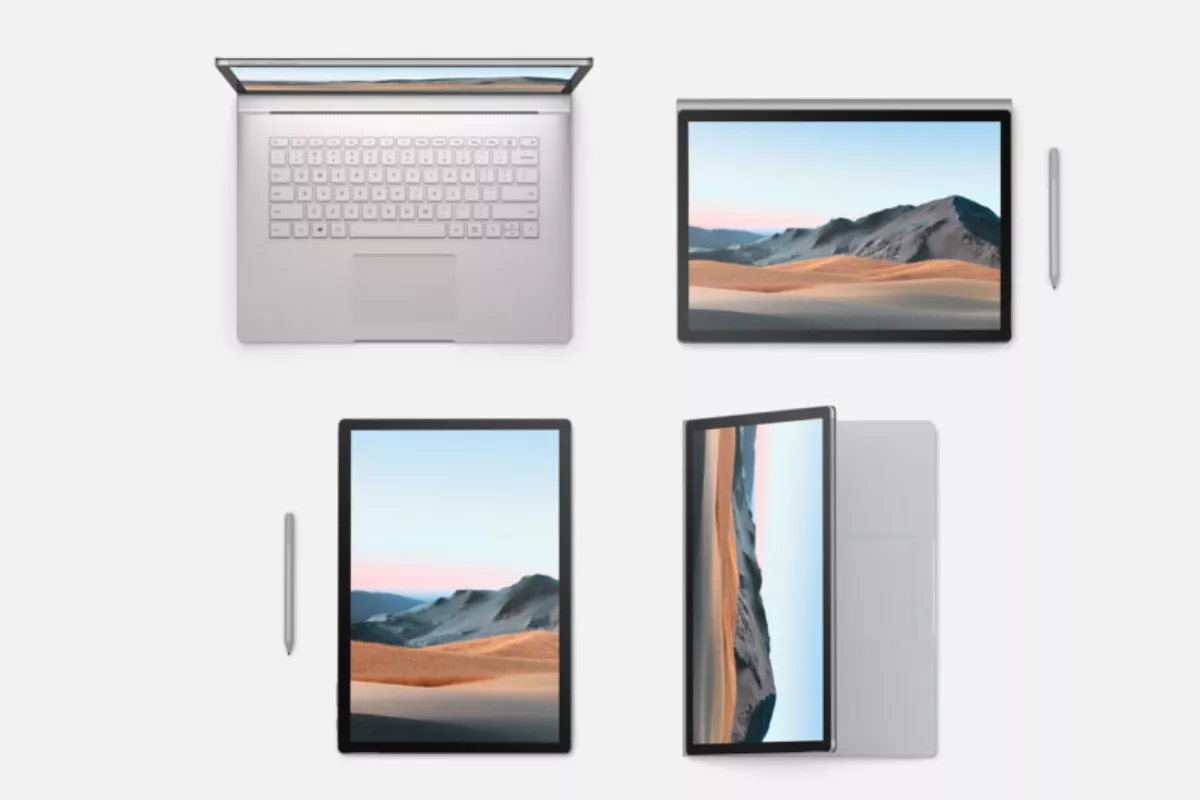
My first experience with a Microsoft Surface device was almost a year ago when I reviewed the fantastic Surface Laptop 3 and Surface Pro 7. For the last month, I've been getting to grips with the Surface Book 3, Microsoft's latest version of its powerful and versatile hybrid laptop.
Starting from $2,949 and rising all the way up to $5,319, it's by no means cheap, but you do get a lot of bang for your buck. It's available with either a 13.5-inch or 15-inch screen, and between 8GB and 32GB of RAM. The Surface Book 3 is available with either an i5 or an i7 processor, and SSD options range from 256GB to 1TB.
The model we tested was the 13.5-inch model with 32GB of RAM, a 512GB SSD, and Intel's 10th-generation i7 Processor.
First impressions and setup
Like with many of today's premium products, you don't get much in the box other than the product itself and the power supply. The Microsoft Surface Book 3 is no different, with everything packed neatly into the box. As I've mentioned in previous reviews, it's frustrating that Microsoft doesn't offer any more than a one month trial of Office 365, considering how expensive the hardware is.
The Surface Book 3 is really simple to set up, taking just 10 minutes or so to link your Microsoft account and configure things like the facial recognition software. In terms of an operation system, Windows 10 Home is installed as standard.
There's an interesting selection of ports on the laptop's exterior - two USB-A ports but only one USB-C, an SD card reader, and a 3.5mm headphone jack. All but the latter feature exclusively on the keyboard part of the laptop. Annoyingly, there's no support for Thunderbolt 3.
The dimensions of the Surface Book 3 are 232 x 312 x 23mm, and it weighs a rather heavy 1.6kg.
Looks
If you're familiar with any of the two previous Microsoft Surface Book products, you won't be able to spot many differences. In fact, it's exactly the same as the previous iteration. ‘If it ain't broke, don't fix it' the old saying goes, and you can't blame Microsoft for sticking to their guns for the latest model.
One of the major downsides to hybrid laptops like this one is that they must use a certain type of hinge that allows for both the detachment of the screen, and the ability to change the orientation of it, and that's one of the major drawbacks with the Surface Book laptops. When looking at the laptop side-on, there's a significant gap that reduces the natural protection a laptop would normally receive when closed.
The Surface Book 3 is a solid, good looking machine, but it doesn't have many aesthetic features (other than the hinge mechanism) that makes it stand out from the crowd. Some might say it's almost understated.
Another downside to this being a hybrid laptop is that it might come across as bulky to some. This is because both the screen and the rest of the laptop need to be big enough to house the innards of a regular laptop.
The screen is of a 3:2 ratio and uses Microsoft's PixelSense multi-touch IPS technology. It's great to look at, and is nice and bright in all light conditions.
The backlit keyboard looks and feels fantastic, but I'd have liked to have seen Microsoft utilise more of the real estate around it for a larger trackpad (it's just far too small), and a fingerprint scanner (because why not?).
The two halves of the laptop come apart easily and a lot quicker than the previous Surface Books.
There are two cameras - both front and rear-facing - that are discreet and non-intrusive.
Performance
As you'd expect with a product that starts at a price point of just under $3,000, the Surface Book 3 is a more than capable machine, although you might expect a faster processor on the more expensive variants.
Our model sported the 10th-gen i7 processor from Intel and NVIDIA's GeForce GTX 1650 4GB GPU. Microsoft claims it's a capable gaming machine, and it ran games like Call of Duty Warzone and Fortnite with zero fuss.
Sadly, in order to fit everything into the tablet part of the laptop, only quad-core chips are used, which is more than enough for the average user.
32GB of RAM is more than ample for most too, but for people like creative designers, who would undoubtedly be interested in a laptop like this one, that sort of memory is a certain requirement.
Sound-wise, the speakers on the Surface Book 3 are a massive letdown, and you'd expect much more for a laptop of this price. The sound quality isn't terrible, but you can't reach the volume levels you'd expect.
The 8MP rear-facing and 5MP front-facing cameras are both pretty good, and will certainly help you stand out on your next Zoom call.
With the screen and keyboard attached, battery life is good. There are actually two batteries - one in the screen, and one beneath the keyboard - that unite together to give over eight hours of heavy usage. Which isn't bad, but it by no means puts the Surface Book 3 at the top of its class. You should always have your charger on standby, particularly if you plan to use it primarily as a tablet.
Verdict
The majority of buyers of the Microsoft Surface Book 3 will undoubtedly be tempted in by the device's versatility, and who can blame them? It's a fantastic device, albeit with a limited target market - you're effectively getting two more-than-capable devices in the form of a laptop and a tablet.
If I was in the market for a laptop (and I will be soon), then I'd certainly consider Microsoft's Surface range, but I'd personally go for the Surface Laptop 3. Then again, I don't really have the need for the hybrid aspect of this laptop.
The Surface Book 3 is by no means perfect, but it's totally unique and very good at what it does.

